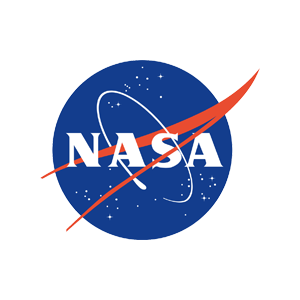NASA Scientists Use RAIN RFID to Monitor Spacecraft Temperatures
Impinj Monza X-8K Dura tag chip allows NASA to wirelessly monitor hull temperatures on upcoming mission spacecraft.
Rocket scientists count on RAIN RFID to lighten their load
NASA needed a new way to gather critical sensor data on spacecraft while meeting their precise specifications. NASA considered many technologies, and ultimately, selected the Impinj Monza® X-8K Dura RAIN RFID tag chip for their sensor tag. The tag chip enables a durable, low-mass solution that can last for years without any regular maintenance. The solution provides:
- Low-mass that does not unnecessarily take up space
- Passive tags able to operate independently for years
- Ability to withstand harsh environments in space
- Tag chip that meets strict NASA requirements and quality assurance
Innovating environmental tracking in a high-stakes environment
NASA set out to eliminate wiring on sensors to increase the amount of information the system can collect while reducing its overall mass. Wire harness accounted for approximately 60% of the original Developmental Flight Instrumentation (DFI) system’s mass. DFI systems are used to collect data intended to validate the spacecraft’s environments, operations, and other factors. Additionally, each spacecraft mission lasts years, sometimes decades, and NASA needed a reliable, low-maintenance solution.
After considering various wireless communication technologies, engineers at NASA selected the Impinj Monza X-8K Dura tag chip for their DFI. By implementing Monza, NASA was able to reduce the DFI’s overall mass while providing a reliable data communications link. How it works:
- Tag chips are built into the spacecraft’s sensors. Monza X-8K Dura chips have re-writable capabilities and can hold current information outputted by the sensor. Sensors may monitor different conditions such as temperature, CO2, and battery levels which need to be accurately relayed to scientists on the ground.
- A single DFI is installed in the spacecraft. The DFI hibernates until called upon by scientists to interrogate each tag. Each DFI unit contains an Impinj Indy R2000 reader chip which is used to read the tag.
- The DFI asks each chip for data. When scientists on the ground want to access information in the spacecraft, they “wake up” the DFI which then interrogates each tag chip for its current sensor information.
When resources are scarce, RAIN RFID performs with the highest accuracy
Passive tags only need minuscule maintenance
Because RAIN RFID chips are only powered when they are in use, system battery life can extend to several years. Unlike Bluetooth or cellular systems, which are active communication systems, RAIN RFID has a low power burden. The low power burden means smaller or fewer batteries can be used which helps cut down on overall mass.
Small size, perfect for space
When every gram of mass counts, getting the smallest item you can, without sacrificing performance, is essential. NASA engineers recognize that the Monza X-8K Dura tag chip not only meets their mass requirements for space travel but their performance requirements as well.
Industry leading accuracy for a high-stakes enviroment
There is no room for mistakes in space travel. With the Monza X-8K Dura tag chip, NASA scientists can depend on each chip to respond to their requests reliably and accurately.
- Article tagged as:
Friday, December 21, 2018
ABOUT THE CUSTOMER
NASA
NASA, the National Aeronautics and Space Administration, was started in 1958 as a part of the United States government. NASA is in charge of U.S. science and technology associated with airplanes or space. NASA’s headquarters are in Washington, D.C with additional NASA centers and research and test facilities located across the United States.
Sign Up for the latest news

